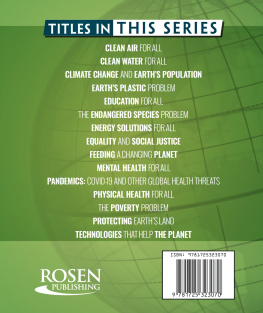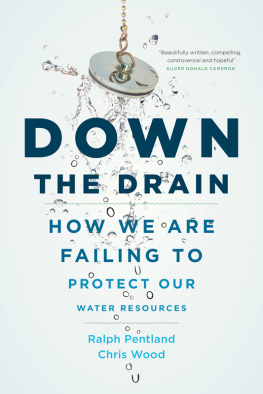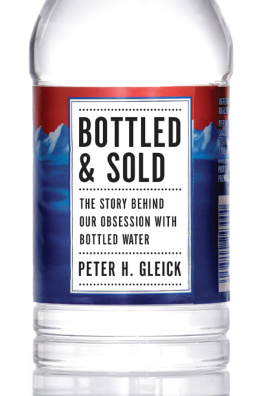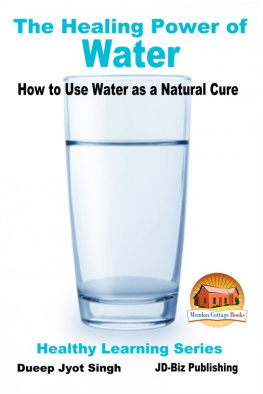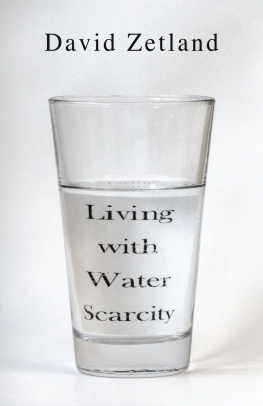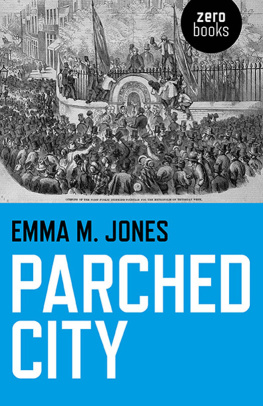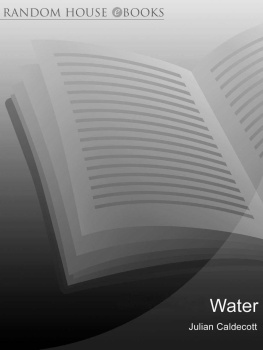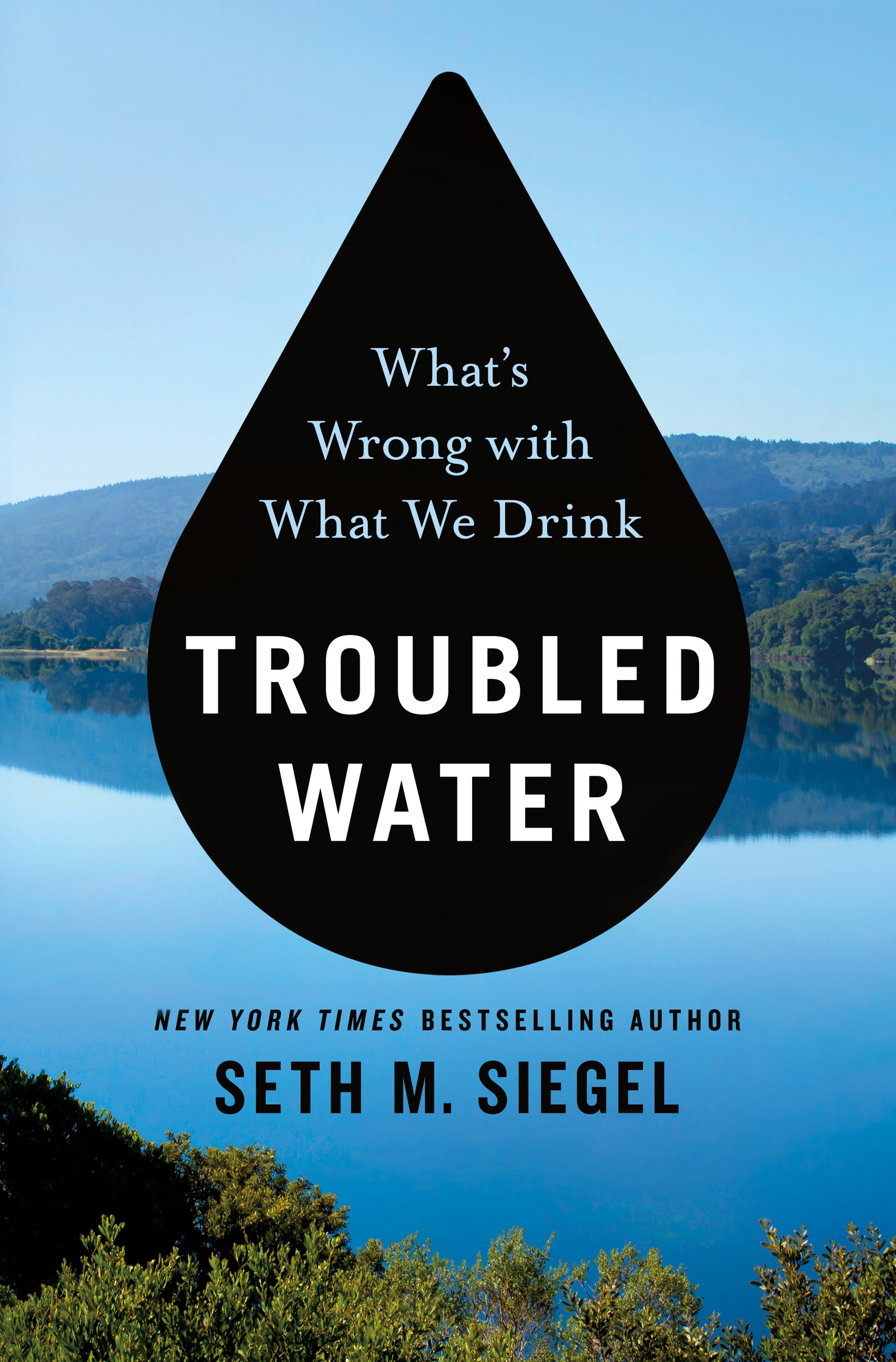The author and publisher have provided this ebook to you for your personal use only. You may not make this ebook publicly available in any way. Copyright infringement is against the law. If you believe the copy of this ebook you are reading infringes on the authors copyright, please notify the publisher at:
L ATE IN THE research for what became Let There Be Water, my book about solutions for the coming global water scarcity, I stumbled upon what became the topic of this book. I was interviewing Professor Dror Avisar, a hydrochemist who heads Tel Aviv Universitys Water Research Center, and he raised a concern that, with a handful of exceptions, it was common to find contaminants in drinking water. With so many pharmaceutical products and industrial chemicals all around us, and with a lack of protective measures taken by most water utilities, the level of contamination was growing worse. He said that this wasnt a theory but a scientific fact, even if one not yet known by the public.
What Professor Avisar didnt know, he said, was what the long-term effect on human health would be from the exposure to so many contaminants in our drinking water. He lamented that more research wasnt being done to help figure out where danger might lie. The professor also said that much greater effort was needed in upgrading wastewater and drinking water treatment facilities. We had the engineering and scientific know-how to remove the contaminants that researchers had concluded were present. But we werent using them because of a reluctance to spend what he guessed was a few dollars per person per month to solve the problem.
With my curiosity piqued, soon after I finished Let There Be Water I began reading about contaminants in drinking water. That led to my calling several national authorities to ask about academic papers they had written. If at first my investigation was limited to scientific elements, I was soon eager to also know how Congress has tried to legislatively handle the challenge, what the EPA was (or often, wasnt) doing, and how local drinking water utilities addressed the problem, among other areas.
After Let There Be Water came out, I began to get invitations to speak. My favorite part of what grew to be hundreds of talks was the Q&A session that followed my formal remarks. Although my book was about available water quantity, invariably someone in the audience wanted me to speak about drinking water quality. The consistency of the question led me to realize that concerns about drinking water safety were more widely felt than I imagined. I saw that many people had a sense that something was awry in Americas drinking water. Between my own interest and what I saw as widespread public concern, before too long I had the subject for what evolved into Troubled Water.
What Troubled Water is not and does not aspire to be is an academic work targeted at a limited audience of professors and graduate students. Although I spent nearly two years reading academic papers and interviewing many professors and drinking water industry professionals to prepare for the writing of this book, the intended audience for it is intelligent readers who care about public affairs. Anyone who wants more is urged to dig into the endnotes and bibliography, to visit the books website, or even to contact me. But no one need come to this book with prior knowledge about the subject or, indeed, any science background at all.
If Troubled Water is not an academic work, it is also not intended as an encyclopedic compendium of waterborne contaminants. That there are many other contaminants I could have chosen in the place of those identified and discussed here says less, I hope, about gaps in this book and more about the scope of the problem. The contaminants and challenges discussed here are each significant in their own right, but are also intended as an example of how our system has failed to keep up with growing insight on the public health effect of what is in our drinking water.
Even a casual look at this book will make clear that there is hardly a reference to the drinking water of other countries. There are three points about the editorial decision to be U.S.-centric in this book that Id like to make. First, it was vexing enough to learn the legislative and regulatory framework for contaminants in my native country. Learning the same for several other countries would have delayed my efforts in getting this book out, something I was reluctant to do given the problems I believe need fixing in the U.S. Second, the water quality of countries outside of the U.S. has a serious impact on our health. It is from many of those countries that we get our fruit, vegetables, spices, fish, and other edibles. When we eat those foods, we are importing the drinking water health codes of those countries. And third, it would be an honor if authors in other countries wanted to use this book as a template for a book of their own about their countrys drinking water. In some places, the drinking water is better than in the U.S. and, I suspect, in many places it is far worse. Everyone everywhere deserves the right to drink water without fear of contamination.
My ambitious goal for Troubled Water is to help launch a movement that will push for better water policies and safer drinking water than we now enjoy. Drinking water quality is an issue that gets far too little coverage by the media or discussion by elected officials and leaders of civil society. Without that attention, the changes needed will never occur. In that, I hope that every reader becomes an advocate for more effort and spending on drinking water issues. If so, it wont be long before every elected official concludes that drinking water is an important subject. Once that happens, we will have safer drinking water and a better system to deliver it. If Troubled Water helps to foster new laws, more health-focused regulations, significantly more research, and the adoption of needed technology in purifying drinking water, I will feel rewarded for my efforts.
Id also like to have many partners in this effort. Please feel free to be in touch, and, most of all, to share your ideas. I look forward to hearing from you at www.TroubledWater.us.
New York City
May 2019
E VEN WITH THE rise of bottled water as an alternative, most Americans still drink tap water. While there is generally no immediate mortal danger in doing so, the worry among respected scientistsseveral of whom the reader will meet in this bookis that contaminants often found in drinking water are disrupting the bodys systems. Among other problems, some of these contaminants have been shown to cause cancer and cardiovascular disease, lead to hormonal disruptions linked to long-term health problems, harm childrens brain development, and possibly trigger changes in our DNA that could later affect a child or grandchild.
Contaminants of one kind or another have been getting into our drinking water for many years. If previously much wasnt done about chemicals that would find their way into tap water, it could be explained away by saying that we just didnt know what was there. What is different now is that we have the scientific means to detect these toxic elements, and with other research tools, to come to a conclusion as to whether they are a threat to public health. Now, we know or can know, but there are significant impediments to doing what is needed to protect ourselves.


